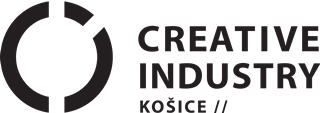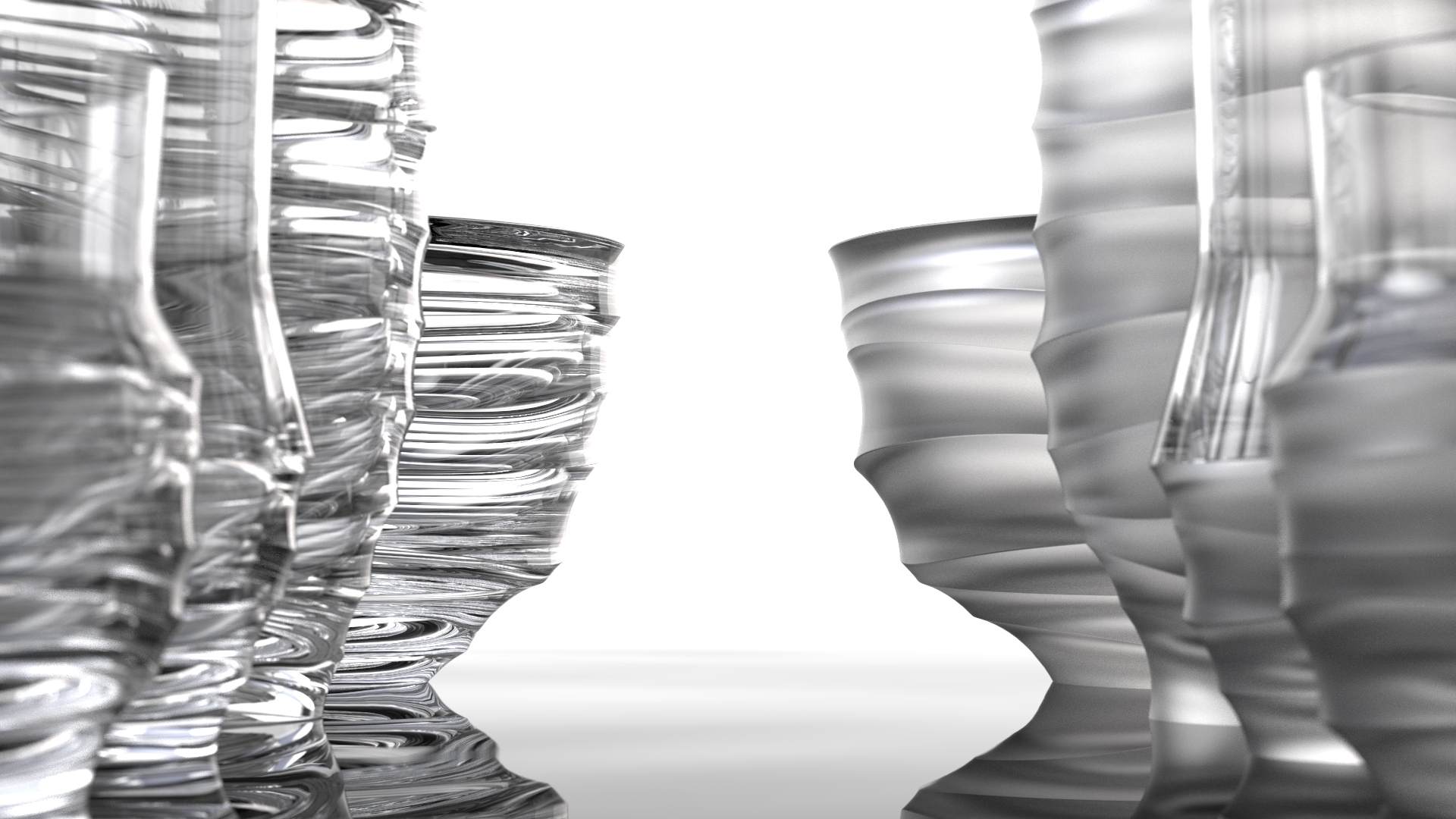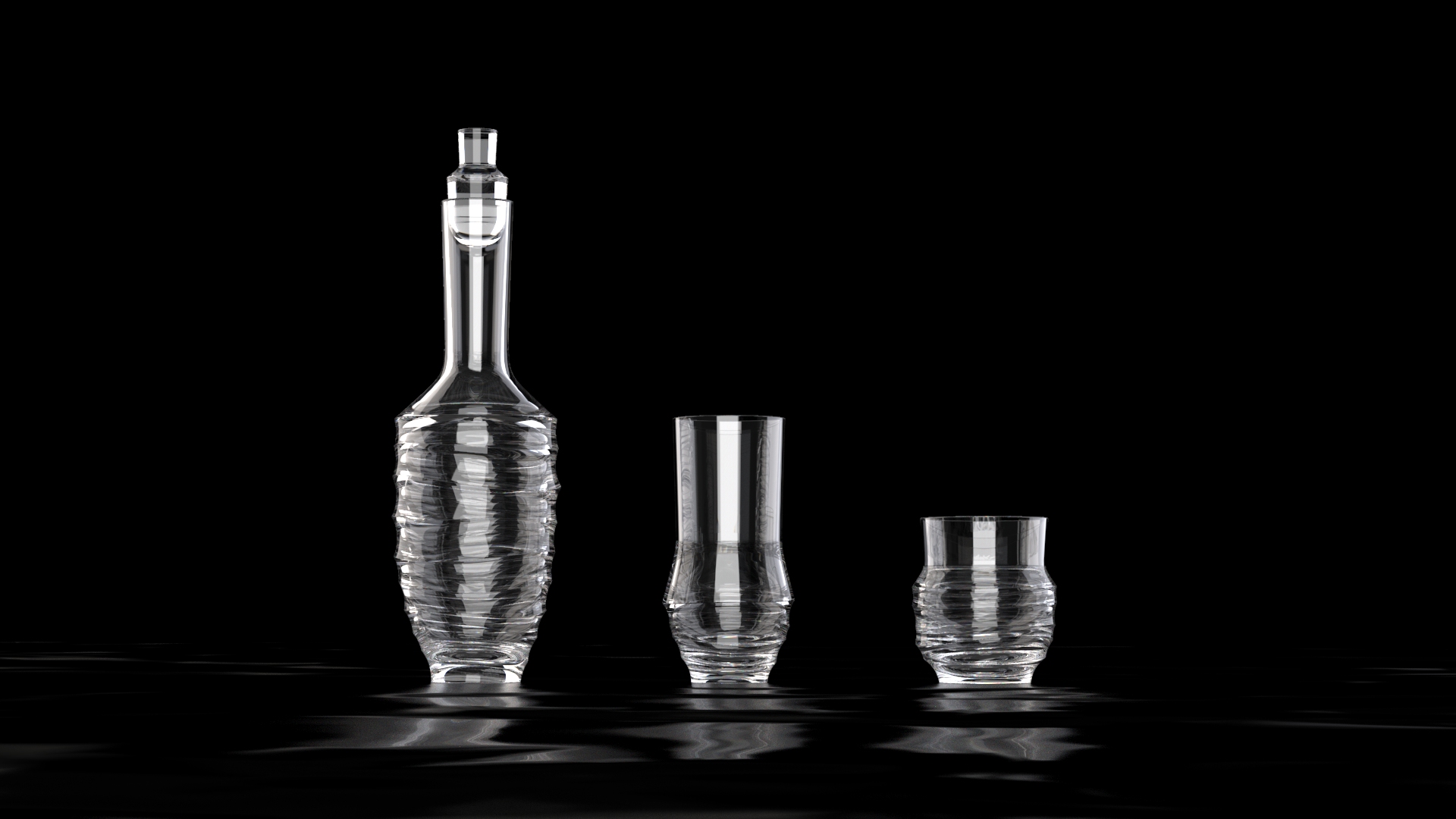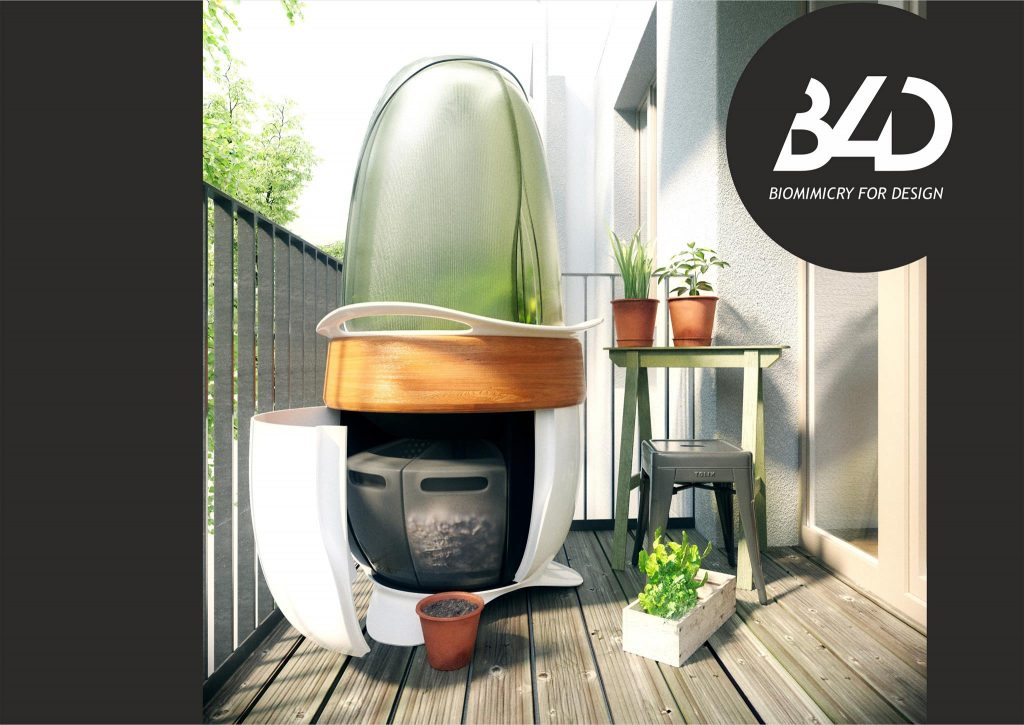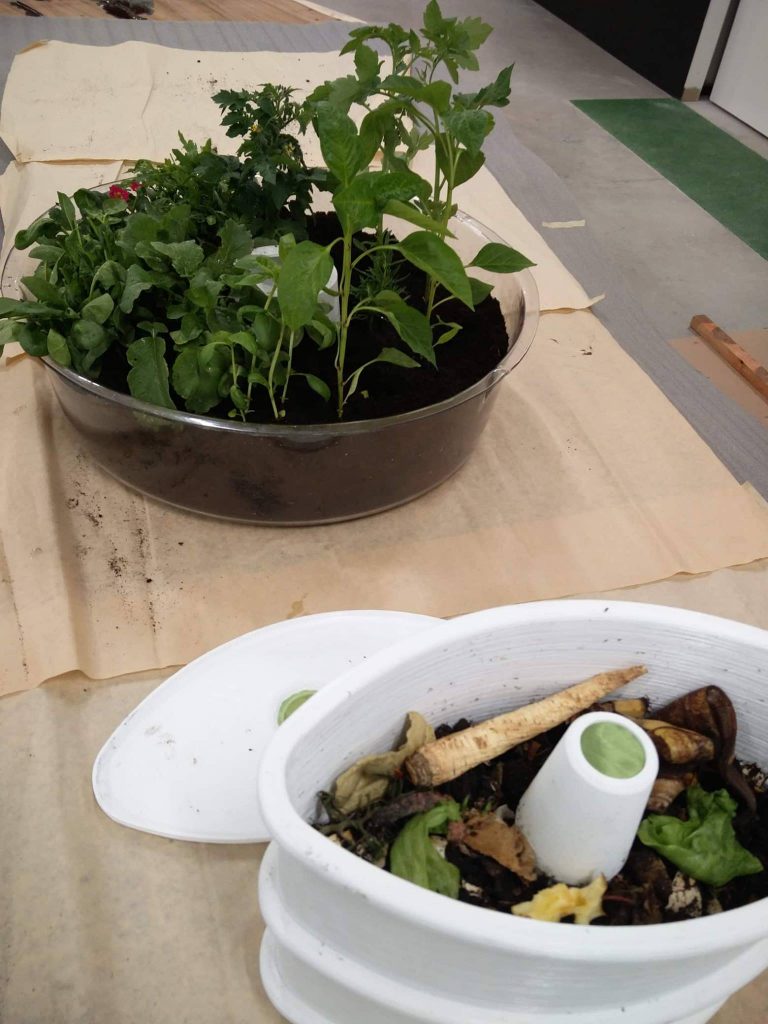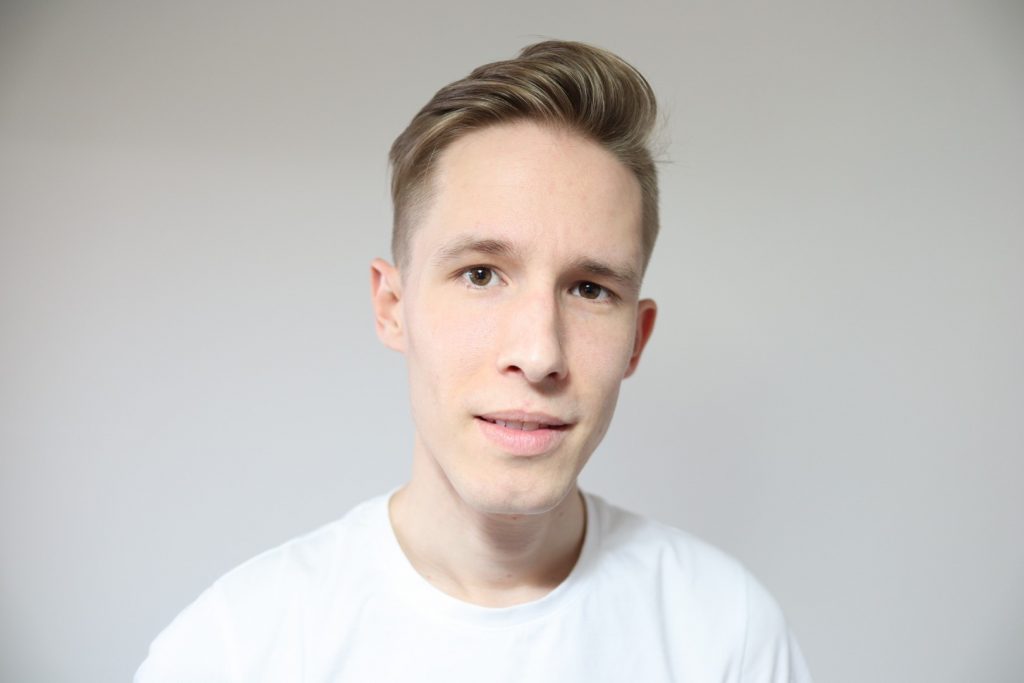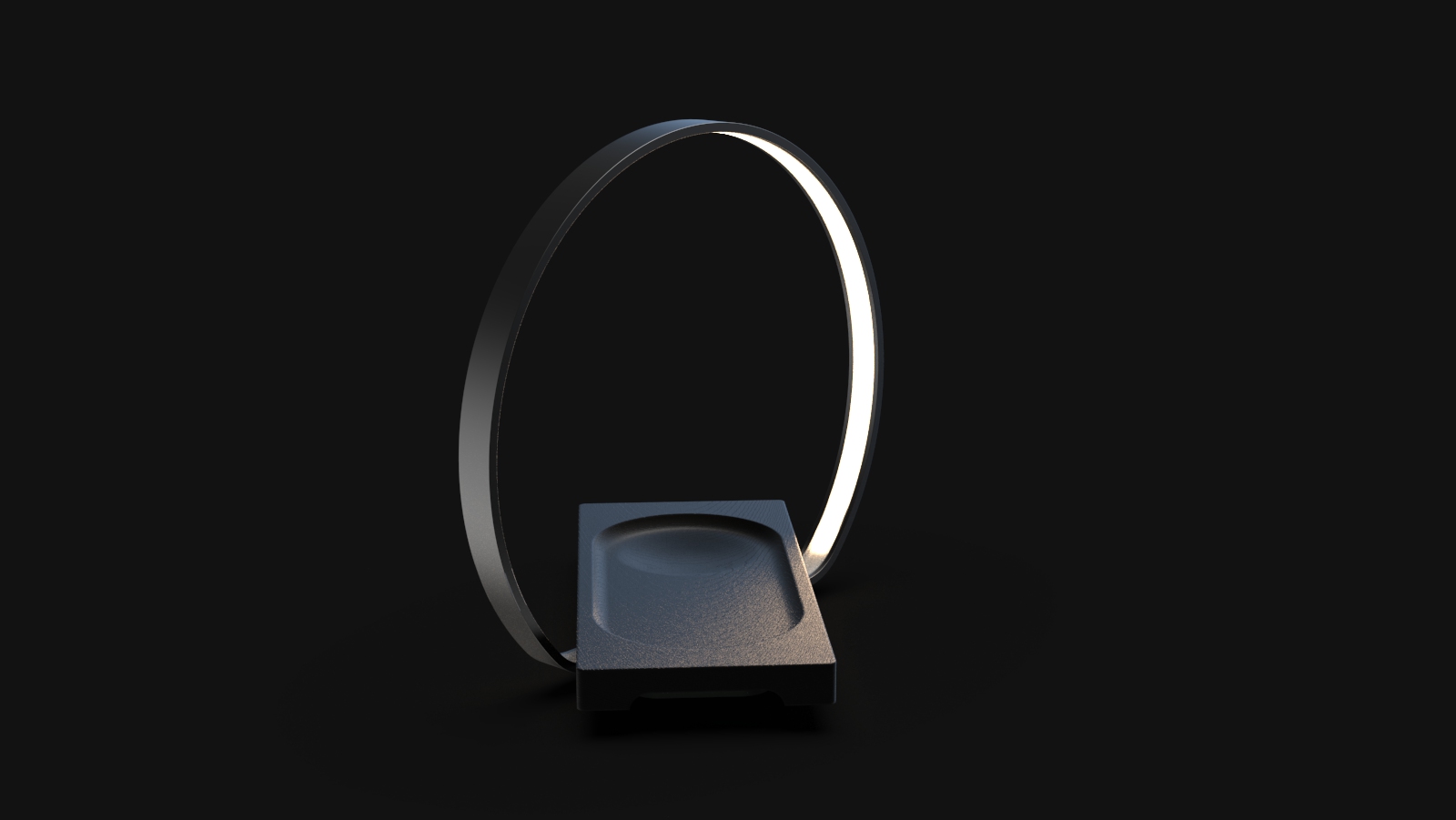František Tóth is a freelance designer interested in a product, furniture, and lighting design. He is the co-founder of the Biocultivator startup, which received the Biomimicry Global Design Challenge, where the Biocultivator concept was selected from seven finalists from around the world. Also, he received the People’s Choice Award, was selected as a finalist for the Startup Awards Slovakia in the Art & Design category, and won the OpenMarker project.
According to the circular economy, design is key to marketing those products that are long-lasting, reusable, repairable, and recyclable. We can influence 80% of the future impact of effects on the environment already in the design phase and, simply put, ensure they do not end up in a landfill or incinerator. Is that so? Do you also perceive the power of design in the transition to a circular economy?
So I can’t completely confirm that 80%, but if I consider that design is a visual side of the product and a strategy, an objective, and an intention of future use, then I agree with that. If we talk about the transition to a circular economy, then that transition may require a complete redesign of products and the use of new materials and technologies. In that case, I think it’s vital. Design is essential, but that’s not all. So, if there is no execution and implementation, then investing in the future can quickly become an extra cost, which is a problem.
So is the execution crucial?
Well, it’s not possible without that design, so it’s crucial. But the energy would be almost unnecessarily wasted if it had no implementation and execution. An experience will be created on both sides; there, the company will say that it was unnecessary, and the designer will say that it was difficult, as it has no real impact. “Fail” reminds me mainly of that execution. I always try to estimate whether the company or the client can deliver its ambition at the beginning.
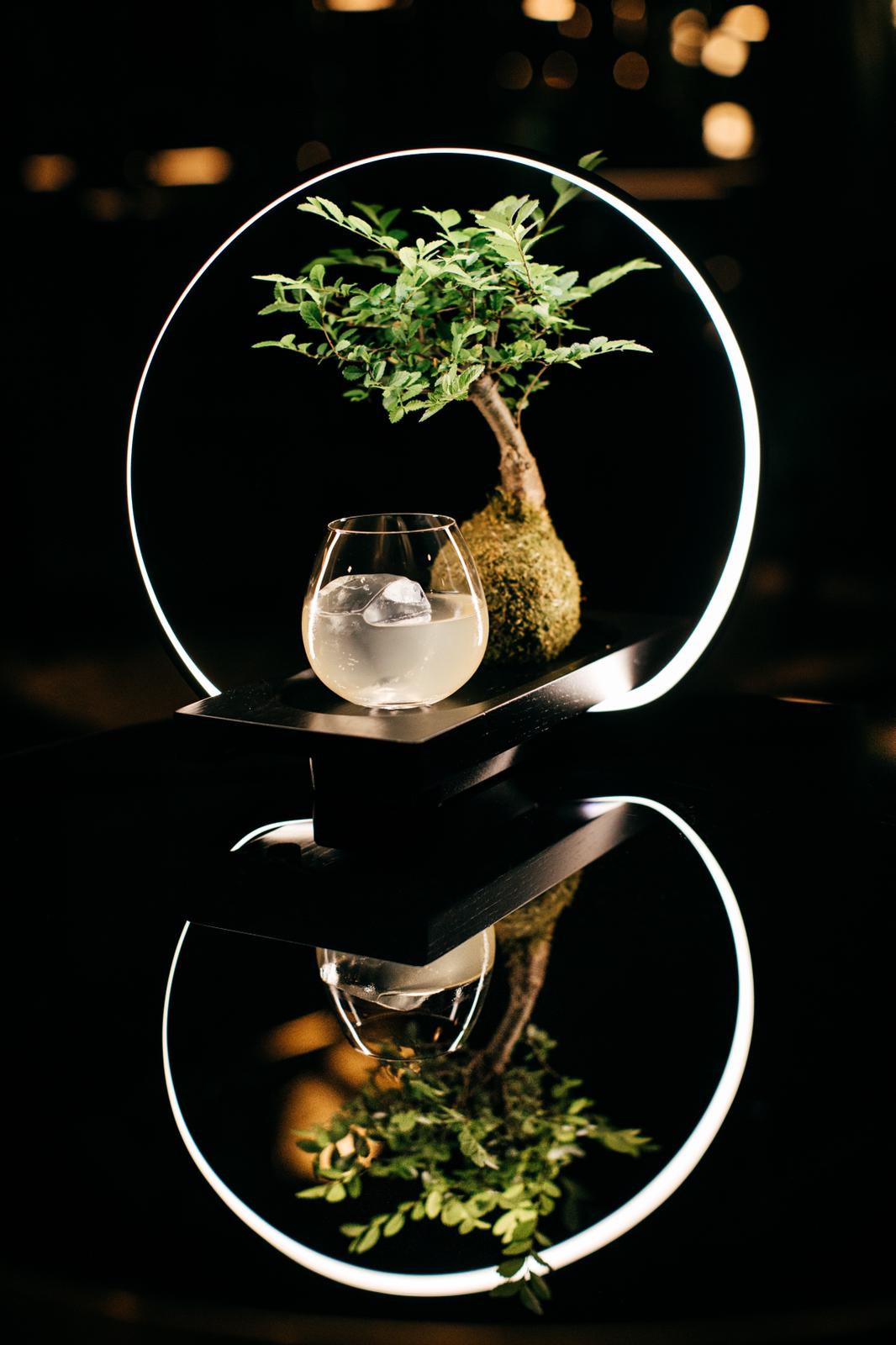
What does circular design mean to you? What aspects does it cover? Can you give us some examples?
It is a creative process that considers the life of the product and its cycle until it becomes waste. Imagine a box on imaginary stairs, at the very top. That box was first intended to serve for delivery. I can use such a box again, for example, as a house for a cat that will tear the box. The box is then recycled and can be used to make secondary packaging, compost, etc. until it reaches the end of its life. For me, this is a circular design or the process of keeping it as long as possible. An example is a mobile phone that can be serviced. Or wood waste that can be used for briquettes. Or a bag that can be used many times and then recycled. The industry has durable furniture; eventually, its damaged part can be replaced.
The designer, as the implementer of his/her client’s ideas, can influence what the final product will look like; however, do those clients give you a free hand, for example, in choosing suitable materials or other aspects that will affect the life of the product?
There are two scenarios. One is the client that already owns some technology and already works with the known materials. Design is adapted to his/her possibilities, even though I try to design products from the beginning so that they are at least repairable and do not waste resources. But if the client does not own the technology, it owns the product, they have more freedom to choose materials and technology. In such a scenario, it is essential to find a subcontractor. Given the design work, a more straightforward scenario is when the client already owns some technology; it requires less investment. If we talk about circular design, I sometimes need to replace the material and, therefore, the technology.
From your point of view, where is design headed in Slovakia? Are we designing more sustainable products?
We have skilled people, designers, and companies in Slovakia. But I feel that they are more successful abroad. I would say that the design from Slovakia is moving abroad. Of course, we have more and more SMART companies here, so it’s definitely improving. It is also related to education; not that these people are looking for education elsewhere, but maybe we do not have an education that would be emphasizing environmental responsibility; as if we are educating the generations that care, since their young age. I think this is much onward abroad.
What materials, in your opinion, have a future or their use is on the rise, and what technologies should designers know?
I think those materials and technologies are closely related. If I were to say that a train in motion with 3D printing and CNC technology is already on the rise, it is undoubtedly also the materials associated with it; such as materials that can be reused or from renewable sources. Also interesting are materials that can grow in a controlled manner and have more functions; they can be repaired or react to the environment. There are already various materials that are being fixed. Most research is done on glass or displays that are bathed. Materials that can grow in a controlled way are associated with this. There, this reminds me of something like a mycelium. Something that grows in general, but we give it a direction to go and, therefore, a function of what it is supposed to create.
We are currently experiencing the 4.0 revolution, when things are being automated, and there is also the Internet of Things, so there are also the materials we know. Composites are a problem because they cannot be separated. But it is composites that combine interesting properties. If they are degradable, that’s good. I think those materials will make sense because there is a move from mechanical to bionic or synthetic. So we have mastered the mechanics well.
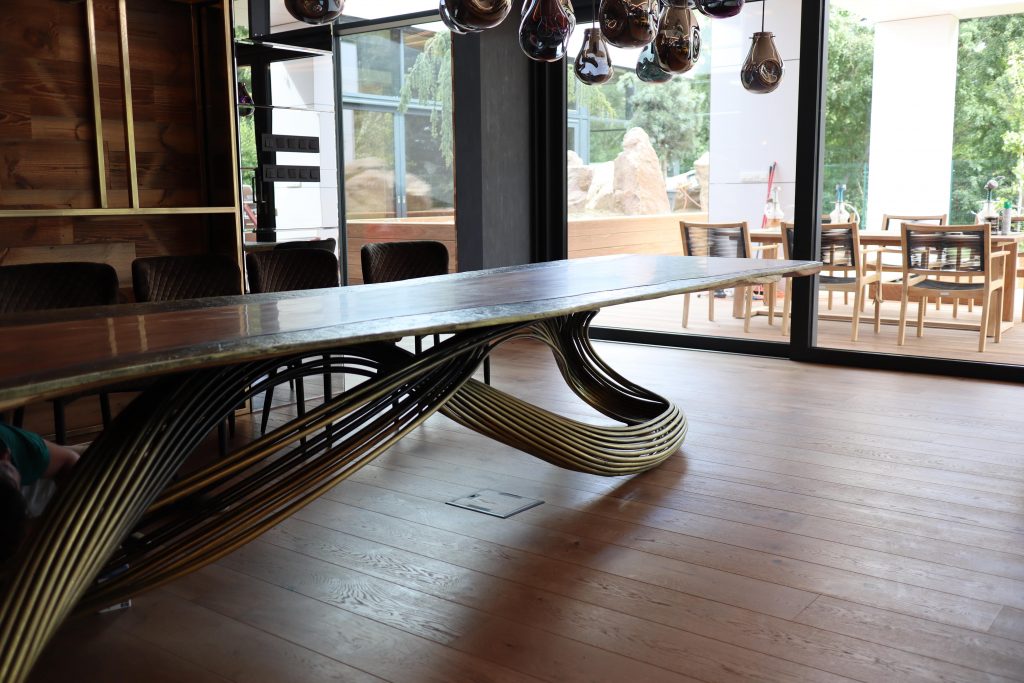
In order for a designer to design a product while taking into account the environmental footprint he/she leaves, he/she needs a huge amount of data and information. How do you orient yourself in all this?
I do this by usually connecting with someone who has better information on the subject than I do. Then, I connect the dots. As a designer, I can’t be an expert on everything. My task is instead to find the correct links. I focus on setting priorities with the client, what is essential for him to most and least. In this way, we can solve at least one aspect well, and the others can be added according to capacities.
For example, in one project, we collaborated with scientists who addressed biology and the atmosphere in different conditions. It was interesting. I always learn in some way. When I talk about other people, it can also be suppliers who, for example, understand the technology much better. It is a combination of scientists and experts, from that practical sphere, who do it.
Slovakia lacks a platform for all organizations and people involved in eco-innovation. Are you building a network of contacts? Is there an association for designers?
We do not have a chamber of designers in Slovakia. It is instead so natural that when a person is close to something, he/she usually connect with professional non-designers and exchanges contacts instantly. Maybe they start working together on something, so that person knows who to call when he/she needs help, and knows who to contact when it comes to making molds, for example.
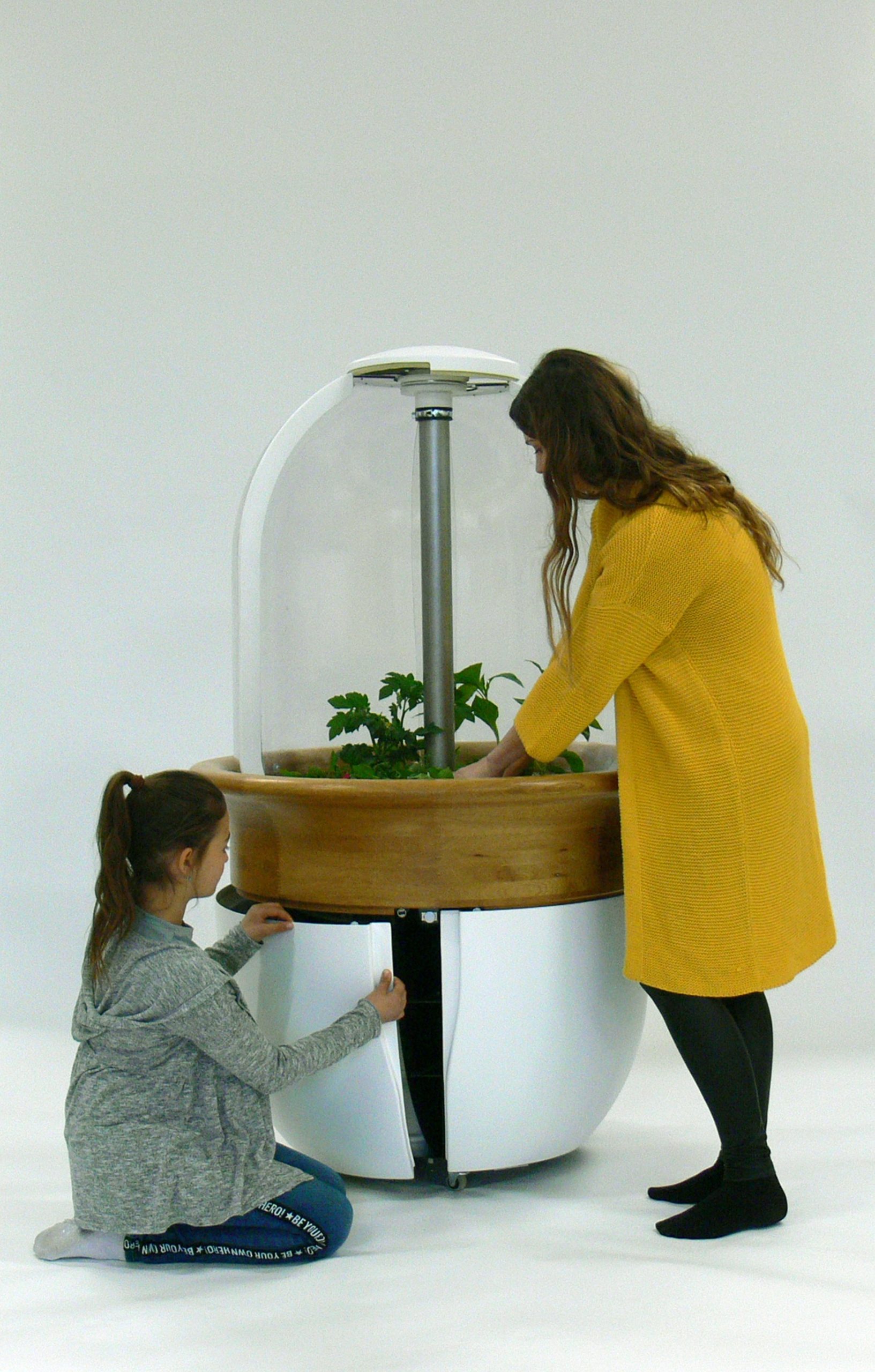
You stand behind the successful Biocultivator startup, an innovative balcony greenhouse for urban environment. How did this project come about, and what have you managed to achieve with it?
I am one of the co-founders. It was created as an initiative of classmates and teachers worldwide called the Biomimicry Global Design Chalange, and later, we became colleagues. We won an award in San Francisco for the best design in the TOP 7 worldwide, which kicked us in continuing. Then we got to the finals for the Startup Awards. We have passed various exhibitions, interviews, and accelerators. But today, this project is not alive. If I am to say the most important thing that we have achieved with it, it would be what it has left us. The experience we have in the biomimicry process, development, business, and, most importantly, deepened our relationship to innovative solutions with a positive impact.
Even though it was a design challenge, it was not about what it looks like but how it responds to the challenge. The project that won the main prize was an insect catcher woven from some straw. But it was clear that we, as a team, were good designers and eventually received an award for design. So I think that we have very skillful designers both in Europe and Slovakia, and people abroad know that, too.
What can the Biocultivator do, and what did the jury appreciate in it?
The theme of the challenge was to solve the question of food in a way that nature is already handling itself. We came up with the idea that we would have a greenhouse that uses a microstructure so that water condenses on it. Thus, the water can circulate in the system as if closed. And when you grow something there, you get biowaste; you put it in compost, where California worms make sure it’s very nutritious soil, and rain-worm tea, which in turn helps to sow those plants again. So, it was a universal solution that could exist on its own. That water, of course, is not a miracle; it cannot work indefinitely, but it certainly keeps that water in the system longer.
Let’s bridge into the world of biomimicry. What should our listener imagine under that? How does this concept differ from the circular design, and is biomimicry applied between us? Are there any products that have been inspired by nature, and we use them daily?
Biomimicry is a combination of the words bio (life) and mimicry (imitation). In short, it is a creative process that solves human problems the way they would be or is being solved by nature. I do not only think mechanically and in shapes but also in meanings. It may sound too abstract, but imagine a biologist sitting at a designer’s desk. Such an example is the butterfly wing that has a very permanent color. Even if the butterfly dies, the color still holds, and the UV light does not pull it out, so it does not fade. When scientists or biologists looked at the wing under a microscope, they found that the wing is not formed by a chemical compound that would create that blue color but by a microstructure that reflects a specific spectrum that forms that blue color. It means it’s mechanical. And such a color is thus stable until the mechanics break, so it is not dependent on UV radiation. An example can be found in everyday life, perhaps in some packaging that can be recycled, and then it disintegrates, but this is probably not entirely typical. Biomimicry, in technical terms, is a supersonic train in Japan. To avoid a bang that would disturb passengers, designers were inspired by the beak of the kingfisher crashing into the water at some speed.
This concept is related to circular design. In my opinion, circular design is the process of maintaining a product as long as possible. Biomimicry goes a little further and tries to meet the 26 principles of life. These are the principles that every animal and organism fulfills. Biomimicry tries to solve and complete as much of those as possible in a creative way. It also covers the circular economy but mainly takes an example from nature. It was already solved in the heart, and the circular economy does not have to solve it again.
What are you working on at the moment?
I take restrictions as an opportunity to find out what works and what doesn’t. Of course, some work seems more complicated to me, especially when it comes to securing the production of prototypes. But some activities and meetings, on the other hand, have been cut only to essential things. I deal with product design, furniture design, consultations, mentoring, lectures; we prepare a biomimicry workshop; I test various materials, such as the mentioned mycelium. I always come up with something we can work on. So I’m not bored.
I was happy to work with students because there is a problem that the interdisciplinarity is not so developed in Slovakia, but it is already beginning to be. It’s great to see students, scientists, technologists, and marketers sitting and working together.
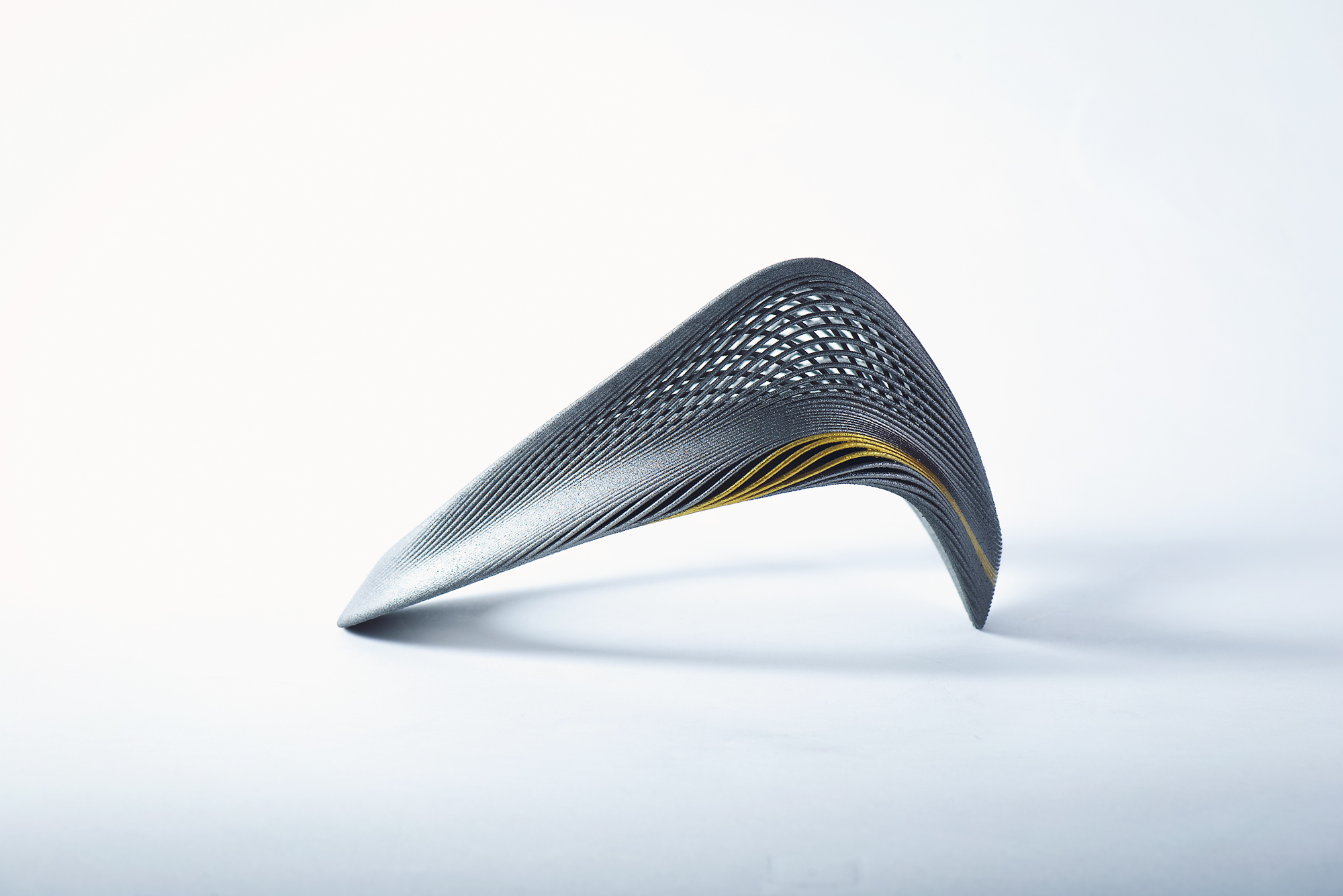
The COCO4CCI project connects companies and representatives of the creative industry to learn to communicate with each other and enter into cooperation. For example, a company that would like to find innovative new solutions for old tires has joined. How do you routinely proceed when a customer with such an ambitious task comes to you?
First, I need to know the problem. But first of all, I will sit down with them and find out what the expectations and conditions are. The next step is market research, which most companies or clients already have. Then, we jointly create their specific assignment, which defines the problem, priorities, and goals. I call it “project source” or “brief.” Only then do I start working on the designs. This is followed by a test, prototypes, partner and subcontractor search, and retuning and submission. This is kind of my process. The advantage is that whatever the market’s reaction, users, the public, or the environment, we can determine where the problem is. Because we can have reflection and have it from the setting of priorities, i.e., that “project source.” Otherwise, if the creative process is just about the feelings that it is just me, and also the client, who like something, although it’s an important part, it’s still gambling. It can work, but it doesn’t have to. A difference is that, in the first case, we can find the cause of the “fail,” and we don’t have to repeat the same mistake unknowingly.
There are specific initiatives in Slovakia. One is called Biohackathon. It is an exciting activity. You can learn a lot from it. We are planning a biomimicry workshop, but it is not yet fully set up, so when it is done, we will let you know.
The series of Creativity4Circularity podcasts was created for the CoCo4CCI project, which connects advanced manufacturing with the cultural and creative industries to facilitate less traditional forms of collaboration. The Slovak Business Agency prepared them. If you want to listen to this interview as a podcast, you can find it on the following platform:
The project is funded by the Interreg CENTRAL EUROPE grant scheme.
